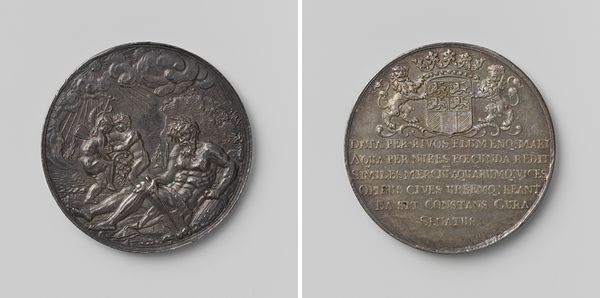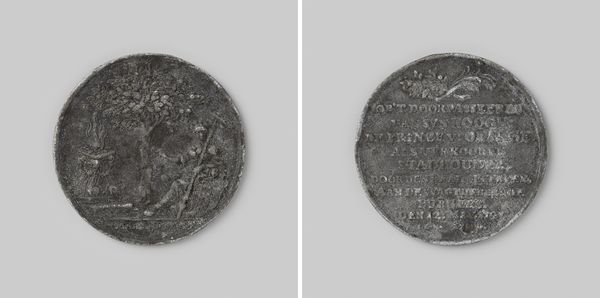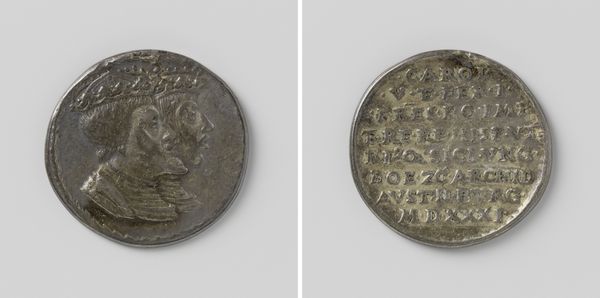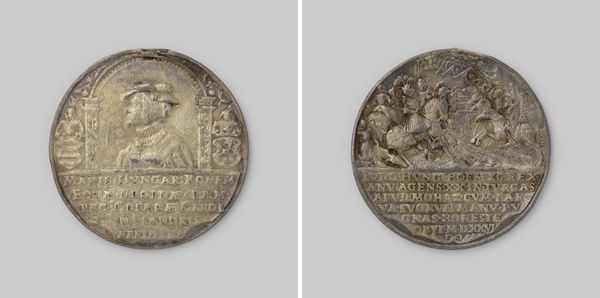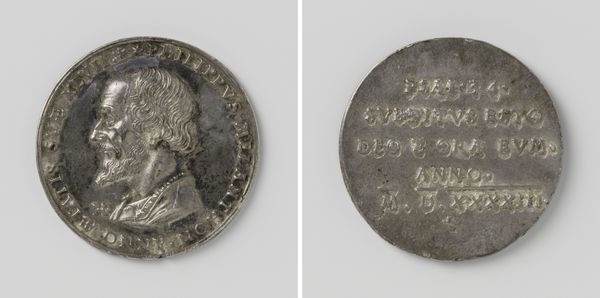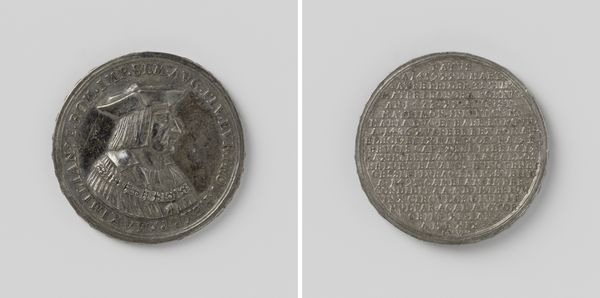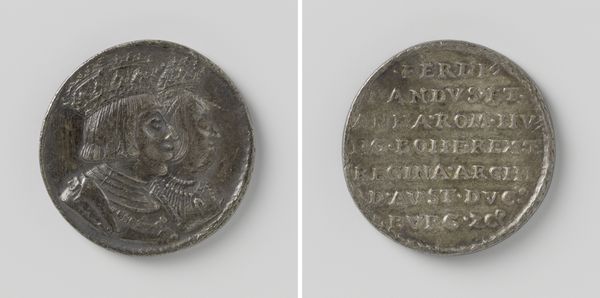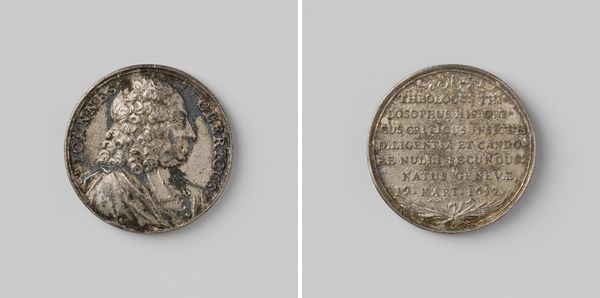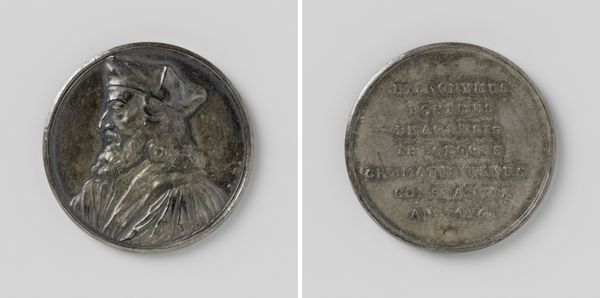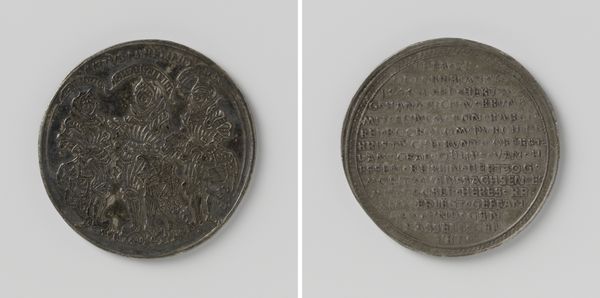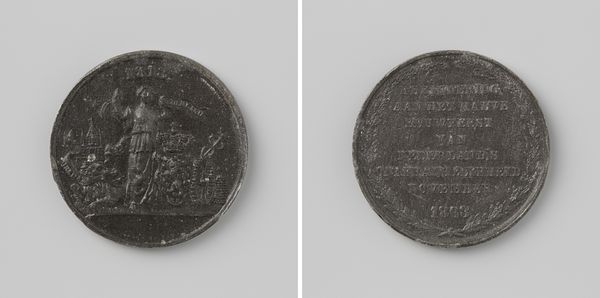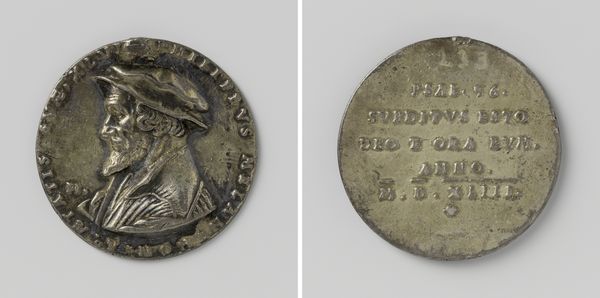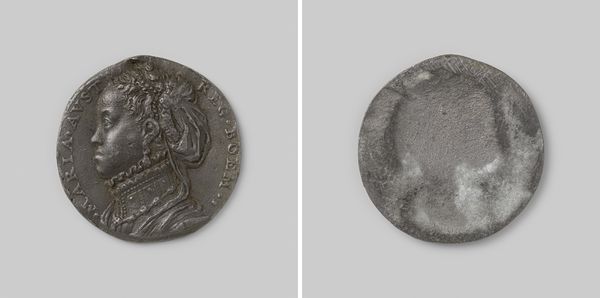
carving, metal, relief, bronze
#
portrait
#
carving
#
metal
#
relief
#
bronze
#
11_renaissance
#
history-painting
#
northern-renaissance
Dimensions: diameter 4.1 cm, weight 22.20 gr
Copyright: Rijks Museum: Open Domain
Curator: Looking at this, I immediately think of a lost world. The monochrome relief feels ancient. Is it some sort of coin or medal? Editor: Yes, precisely. What we’re observing is a bronze plaquette made by Hans Schwarz in 1519, titled "The Five Pfintzing Brothers." It functions as a portrait, but also as a historical document reflecting societal structures. Curator: The figures are striking, though their faces are quite worn. They seem very formal, austere even. There’s a severity in their expressions. It certainly gives off an air of privilege. Editor: Absolutely. It's vital to remember the socio-political landscape. Family legacy, especially male lineage, meant everything. Commemorating five brothers this way speaks to their importance, their power, and reinforces patriarchal structures. The wear you see could be interpreted, perhaps, as symbolic of time eroding that power, but its initial intention was surely the opposite. Curator: On the other side there appears to be a dense inscription. Can you read what it says? Editor: In Latin. It's dedicatory text listing names and likely some important roles or attributes associated with each brother. The inclusion of text further elevates the piece beyond a simple likeness, turning it into an enduring proclamation of the family's status and achievements. Think of the contemporary urge to be trending. Curator: How would something like this have been displayed? I imagine it was quite valuable at the time. Editor: Most likely it would have been privately held within the family. These kinds of artworks acted as status symbols but were also kept to uphold traditions, lineage, and remembrance. Its value resided not only in the material itself but in its symbolic power. Curator: Looking at it now, knowing more about its context, I find it both compelling and troubling. There's a clear intention to immortalize power, which, seen through today’s lens, prompts critical examination of those historical power dynamics. Editor: Exactly. The plaque invites a conversation about visibility, representation, and whose stories get told and remembered, even centuries later.
Comments
No comments
Be the first to comment and join the conversation on the ultimate creative platform.
